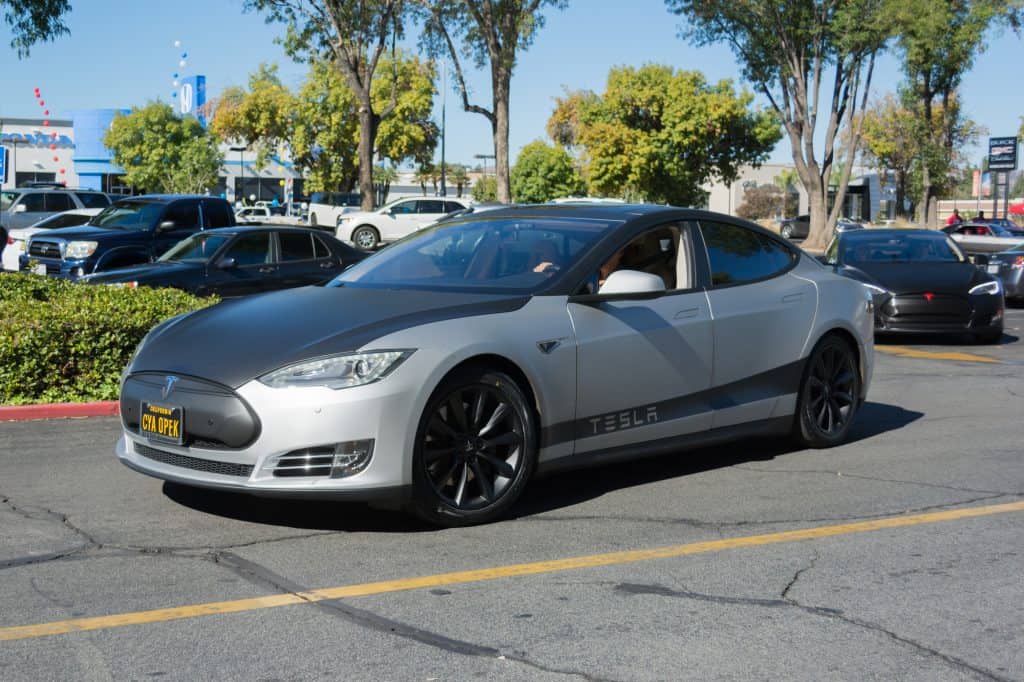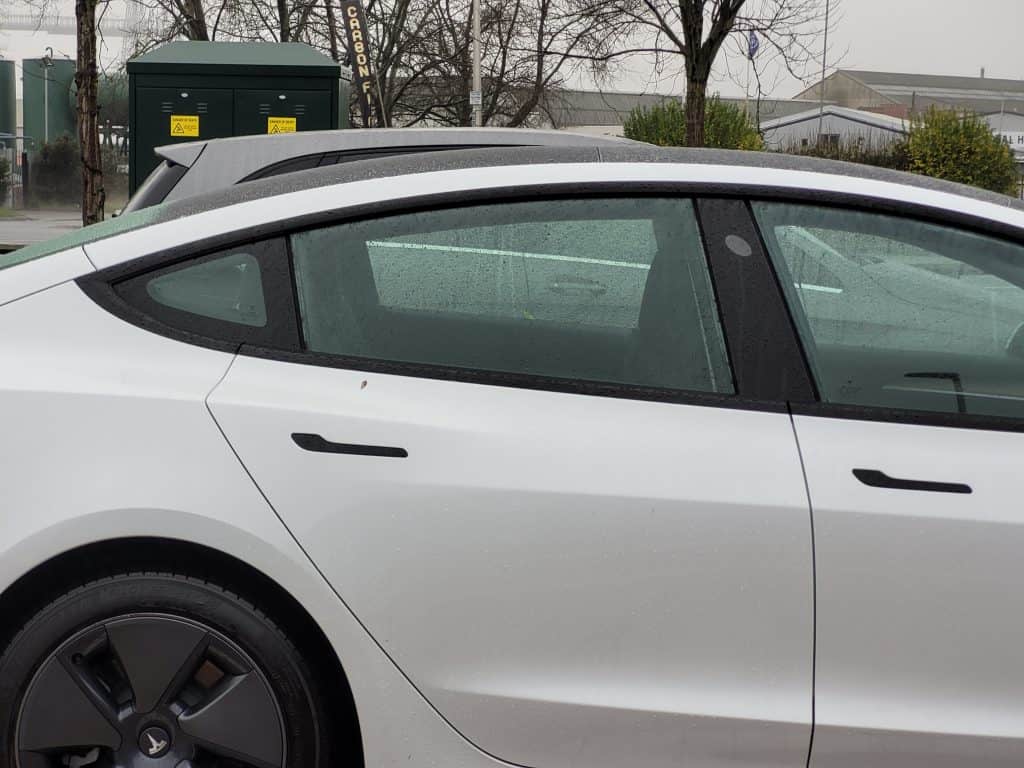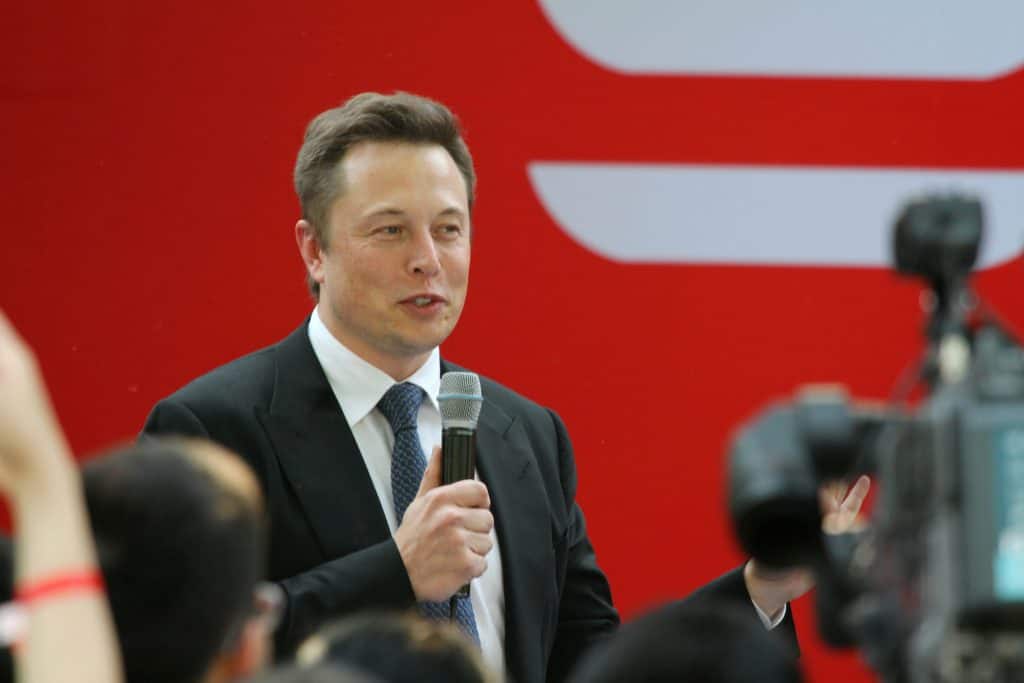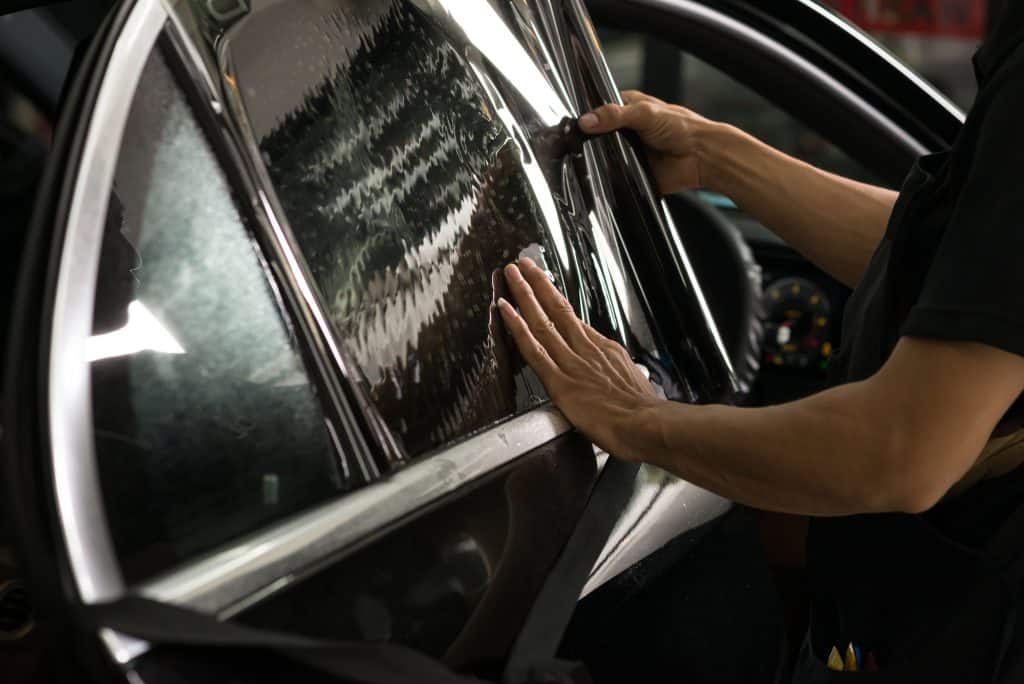Window tinting is one of the simplest and most popular methods used to modify vehicles. Not only does it help to enhance the exterior aesthetics of the vehicle, but also provides additional privacy for passengers, and adds numerous protection benefits.
If window tinting is such a popular mod and brings so much benefit? Why aren’t premium electric models like Teslas making more widespread use of it? When it comes to electric cars, the benefits of dark window tinting could even stretch to helping preserve battery power. And yet, when you see many Tesla models, there is little to no window tinting.
The newest Tesla Model 3 vehicles offer tinting in the glass roof as part of the standard setup. Furthermore, the newest models seem to feature some degree of tinting in the rear windows, but not to a very strong degree? In today’s blog, we’re going to explore the world of window tinting and how it relates to Tesla cars.
Tesla Window Tinting
If you were to go onto the Tesla website to look at creating a custom order for a new car today, you’d find a number of things relating to glass tinting and protection. Let’s say you go to customize their most popular car, the Model 3. On the list of interior features, you’ll first see them highlight the glass roof.
According to Tesla’s information, “Infrared and ultraviolet light is effectively blocked before entering the cabin, reducing heat and glare even when the sun is directly overhead.” This tells us that there is some form of protective film over the glass, and Tesla’s bullet point list of features mentioned quite clearly a “Tinted glass roof”
Next, if you look at the latest Model X, you’ll find that as part of the Panoramic Windshield feature, there is “Optimized solar tinting and an obstruction-free view.”
The word “optimized” here is important because what it tells you is that the parts of the windshield that can have this protection have it, but the reality is that it’s impossible to do the full windshield because of existing US laws. We’ll deal more with that in another section below.
Furthermore, the bullet point list of interior features for the Model X mentioned “Ultraviolet and infrared protection on all glass,” though there’s no explicit mention of tinting. So, it seems that as far as Tesla is concerned, they are providing the protection but not the tinting.
What is Window Tinting?

So Tesla isn’t big on window tinting, but the next section on tinting laws should make the reasons for that quite clear. First let’s clear up a bit of information on what exactly window tinting is. In short, window tinting refers to the application of a special film to the window interior that subsequently provides protection from UV and infrared light from the sun’s rays.
Tinting film comes in a huge range of quality and styles. The most noticeable difference between each type is how dark it is and thus how much light gets let through. This is represented by a number simply referred to as the tinting percentage. The higher the percentage, the more light that is allowed to get through the glass. For example:
- 100 percent – this is transparent and all light is getting through
- 85 percent – most of the light is still getting through
- 35 percent – quite dark and most light is filtered out
- 5 percent – extremely dark and almost no light is getting through
Obviously, the more light that is filtered out, the more harmful stuff is filtered out, too and the darker and cooler the interior of the car will be. However, it’s not just as simple as choosing a level of tinting that you want and then applying to your car.
Unfortunately, there are rules to be followed and virtually no country nor state in the US allows for carte blanche on car window tinting for numerous reasons, which we’ll cover further below.
Window Tinting Rules in the US

Window tinting is a big industry in the US, with estimates of a $1.45 billion market value in 2019 that is expected to grow to $1.68 billion by 2027. That being said, it is also quite strictly governed when it comes to tinting percentages, and which windows can be tinted and to what degree.
We won’t cover all 50 states in our text here, but you can find a comprehensive list here, which includes window tinting percentages permitted on which windows, the amount of reflectivity allowed, windshield tinting restrictions and any other rules that exist.
We’ve picked out some highlights to make our point below.
Let’s start with 2 western states, Arizona and California:
| State | Front Side Windows | Back Side Windows | Rear Windows | Windshield | Reflectivity | Other Restrictions |
| Arizona | 33% | Any | Any | Up to manufacturer’s as-1 line | Max 35% | No red and amber |
| California | 70% | Any | Any | 4 inches | Same as standard window | No red, amber or blue |
What’s interesting with these 2 states is that they are extremely permissive when it comes to the rear side windows and rear windows, but not as much with the front side windows. Let’s compare these with very restrictive states.
| State | Front Side Windows | Back Side Windows | Rear Windows | Windshield | Reflectivity | Other Restrictions |
| New Hampshire | None | 35% | 35% | 6 inches | No metallic or mirrored | Dual side mirrors needed for back tinted windows |
| New York | 70% | 70% | Any | 6 inches | No metallic or mirrored | Dual side mirrors needed for back tinted windows |
New Hampshire allows for no tinting at all in the front side windows, and only up to 35 percent on the rear windows. New York only permits up to 70% on front and back side windows.
Why are New York and New Hampshire so much more restrictive than California or Arizona? Why are states like New Jersey, Pennsylvania (70% across the board), Rhode Island, Washington D.C. in line with these two states?
On the other hand, why are Florida, Nevada, New Mexico, Hawaii, and Texas all more in line with California and Arizona? Perhaps you’ve already noticed some pattern or similarities between these different groups.
It seems that as a general rule, states that are hotter, sunnier and experience more intense sunshine are more lax on car tinting laws. Northeastern and Midwestern states where there is certainly sun in the summer but most of the year it feels more “absent” shall we say, tinting laws are more restrictive.
But, why have these rules at all? And why is the windshield singled out for such attention?
Why Have Tinting Laws At All?

With different requirements in each state, it’s easy to see why Tesla would leave it mostly to the aftermarket to apply tinting. Their production has enough factors slowing it down without adding customized window tinting jobs into the mix.
But why are these laws even necessary? There are a number of reasons:
Road Safety
The fact is that window tinting reduces visibility from inside the cabin. If your windshield and front windows were dark tinted, you’d still see through them just as one can see through a pair of sunglasses, but it would be like driving in bad lights all the time, and yet your car’s headlights would be making no difference to the problem.
This is a serious problem when you have to perceive and react to hazards in the road like cyclists.
It’s for this reason that a lot of extra attention in particular is paid to the windshield. For the most part, only a very small section of the windshield from the top is allowed to be tinted. This provides some protection from glare and UV to the driver and front passenger’s faces, but won’t obscure any part of the view.
Visibility from Outside

Privacy is one thing, but it’s not lawful to have your windows to the point where a police officer would not be able to see something going on in the car. It’s reasonable that we expect law enforcement officers to be able to see where people are committing infractions like talking on their phones, or eating and drinking while driving, but reflective tinting from the outside would obscure that.
Furthermore, if a law enforcement officer has pulled a car over and is approaching it, them being able to see what people in the car are doing is critical for their own safety. If the glass is obscured, a criminal could be producing a dangerous weapon all while the office remains oblivious.
Conclusion: Is Car Tinting Worth It?
If you’ve already spent a lot of money on a new Tesla, is it then worthwhile to go and spend even more cash to get the windows tinted? On balance, despite the expense and the hassle of looking after car window tinting, the benefits are very apparent and worthwhile:
Benefit 1: Improved Interior Environment
When you have the windows tinted, the windows are now filtering out ultraviolet and infrared rays, which makes the environment in your car cooler and safer. If you have children or even adult passengers with fair skin, the constant exposure to the sun is doing them no good. The tinting can help to remove the harmful stuff from the sun’s rays.
Benefit 2: Improved EV Performance
It makes sense that if your windows are keeping out heat and UV radiation, then your car’s air conditioning has less work to do to keep the interior cooler. That preserves battery power, all of which can be channeled into greater range.
Benefit 3: Better Protection for the Interior
It’s not just people on the inside of the car who need protection from the sun’s UV and infrared. Your car’s dashboard and upholstery also easily becomes the sun’s next victim. Cloth upholstery can become discolored, and leather can dry and crack. The dashboard can also crack and lose integrity when left under intense sunlight.
Benefit 4: Increased Comfort and Privacy
Finally, passengers in the rear seats can enjoy greater comfort and a sense of privacy, which is nice on long journeys. The glass isn’t one-way, but it at least obscures enough that any normal passing glance wouldn’t be able to determine anything going on in the car. It also keeps out the sun’s glare, which is beneficial for those watching screens during a long journey, and leaves passengers less likely to get glare-induced headaches or stress.
So, in all, it’s a worthy investment on any car, including a Tesla Model 3 or other Tesla vehicle. Just be sure that you are applying tint within the laws, and that your tint won’t interfere with any part of the Tesla’s operation like its cameras or sensors. Only use very reputable and experienced applicators to ensure that the job is done properly, even if it costs a little more.